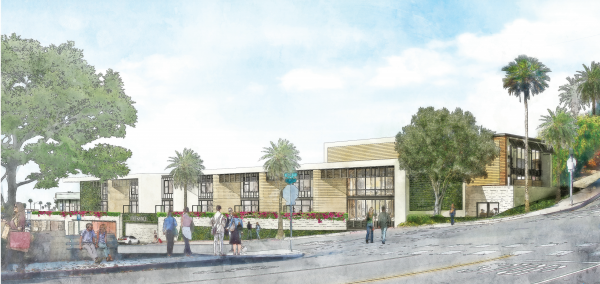
By Megan Miller, Special to the Independent
The Laguna Beach Planning Commission unanimously pushed forward a new ordinance Wednesday that could see a crackdown on large scale development.
The updated law would impose citywide restrictions on the height, mass, and bulk of buildings to preserve the City’s small-scale village feel. If approved, the city law could be presented as an alternative ballot measure for the Laguna Residents First Initiative, which seeks voter approval for large scale projects in efforts to curb overdevelopment.
“There seems to be some real anxiety now about future development coming down the pike and we’re not ready for it,” Commissioner Susan McLintock Whitin said.
Following commissioners’ approval, the City Council will review the proposed change on July 12 which prevents lot mergers exceeding 15,000 feet within 500 feet of the Downtown Specific Plan area (DSP). For projects outside of the boundary, the ordinance will restrict individual building street frontage to 150 feet.
To develop a lot or string of lots where the street frontage is over 150 feet, the building must be designed to appear as two or more distinctly different structures through a variation of materials, colors, and roof heights.
The goal of varying up the facade is to prevent the bulky appearance of block-long, monolithic structures, Director of Community Development Marc Wiener said.
“Through that variety, you also want that design to be cohesive, and appear as an integrated design,” Wiener said.
As an example, Hotel Laguna has a street frontage of about 130 feet. Casa del Camino has about 70 feet, and Surf and Sand totals 142 feet.
In addition, larger scale projects will be required to commit at least 10% of their total square footage to public open space such as walkways or courtyards. Sites over 15,000 square feet will also be required to have a conceptual hearing with the Planning Commission before official review, right of way improvements, and environmental sustainability features.
Parking restrictions could also see an overhaul, Wiener said. However, much of staffers’ plans are contingent upon the Master Parking Plan which the City Council will review in September.
Already the City has been looking into shared parking agreements. A Memorandum of Understanding with Laguna Presbyterian Church was recently approved and could see the development of a downtown parking structure along Third Street.
The trolley service and dynamic parking rates throughout the City are also helping traffic flow, Wiener said.
“We can still enhance that further, and we could do more. So that’s what this Master Plan is going to do,” he added.
Some commissioners lauded the updated development restrictions, claiming it would send a message to developers while also gaining back resident confidence in the City’s efforts to prevent overdevelopment.
However, some worried the ordinance might be too constraining.
“I don’t look at it as meaning to be punitive or restrictive,” Whitin said, adding that the proposed city law is meant to preserve the “spirit” of Laguna’s village charm.
After discussion, Wiener said staffers will also present a list of commissioners’ suggestions to the City Council for review, including: striking the 150-foot street frontage restriction down to a 125-foot limit, prohibiting exposed subterranean parking or parking along the facade of the building, and adding a 500-foot buffer around Coast Highway in addition to the boundary around the DSP.
Commissioners also suggested removing the buffer altogether, instead opting to apply the updated restrictions citywide to new developments over 10,000 square feet for a more universal application of some of the building criteria.
“I think we should be able to have a little bit of flexibility in some of these guidelines and not have it be hard and fast,” Commissioner Jorg Dubin said.
Under the proposed city law, height variances could also be issued to allow rooftop dining purposes only if the furniture is set back and screened from public view—language that Commissioner Steven Kellenberg called “open-ended.”
Commissioners recommended staffers clarify a reasonable place and distance from which the rooftop dining should be concealed.
Though the City Council could choose to change the restrictions, Commissioners agreed the proposal codifies some of the development criteria the Design Review Board has already been implementing in the City to preserve Laguna’s small beach town charm.
“That’s the goal. You end up with smaller buildings, with individual buildings that are all unique,” Kellenberg said.





I think this all comes down to who you trust more to make decisions in the resident’s best interests. I perceive that the current City Council, some elected with the big money of big developers, is not as trustworthy as Laguna Residents First to resist overdevelopment. So, when push comes to shove, I’ll trust Laguna Residents First’s ballot measure as the one that will protect our city the best.